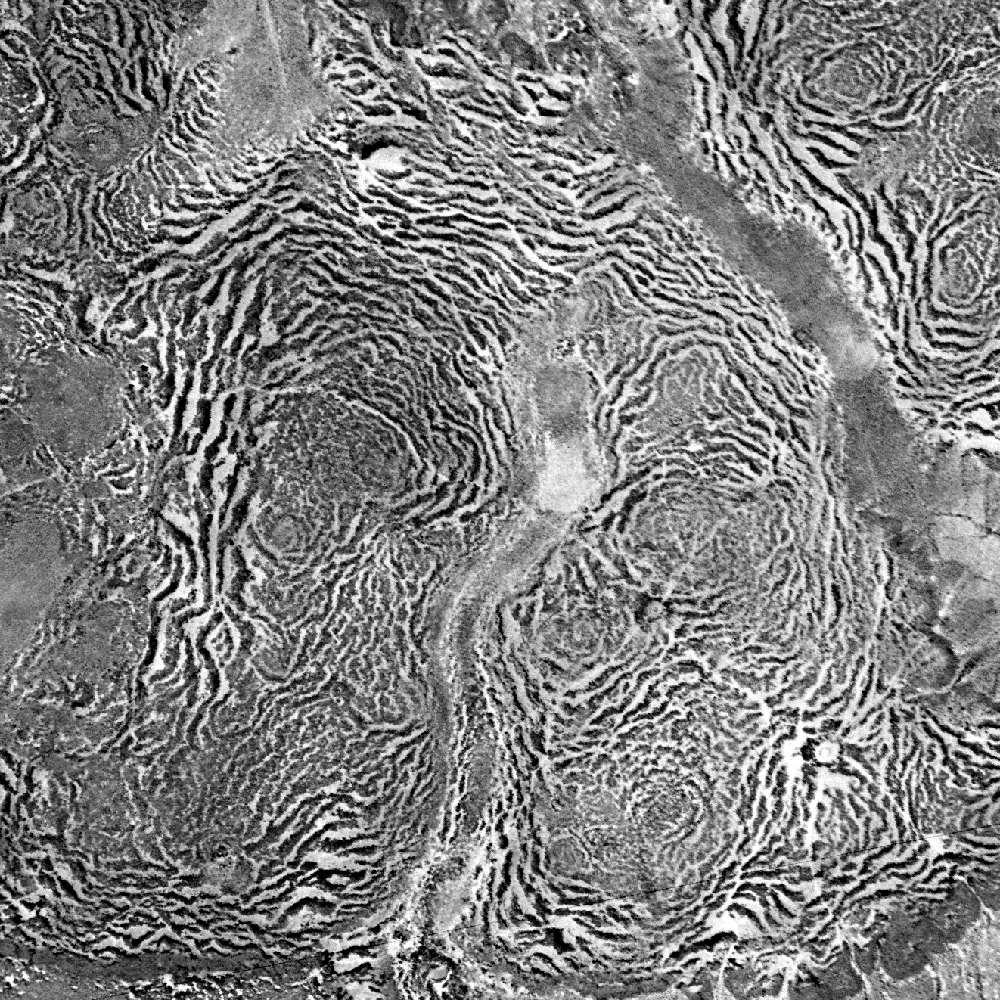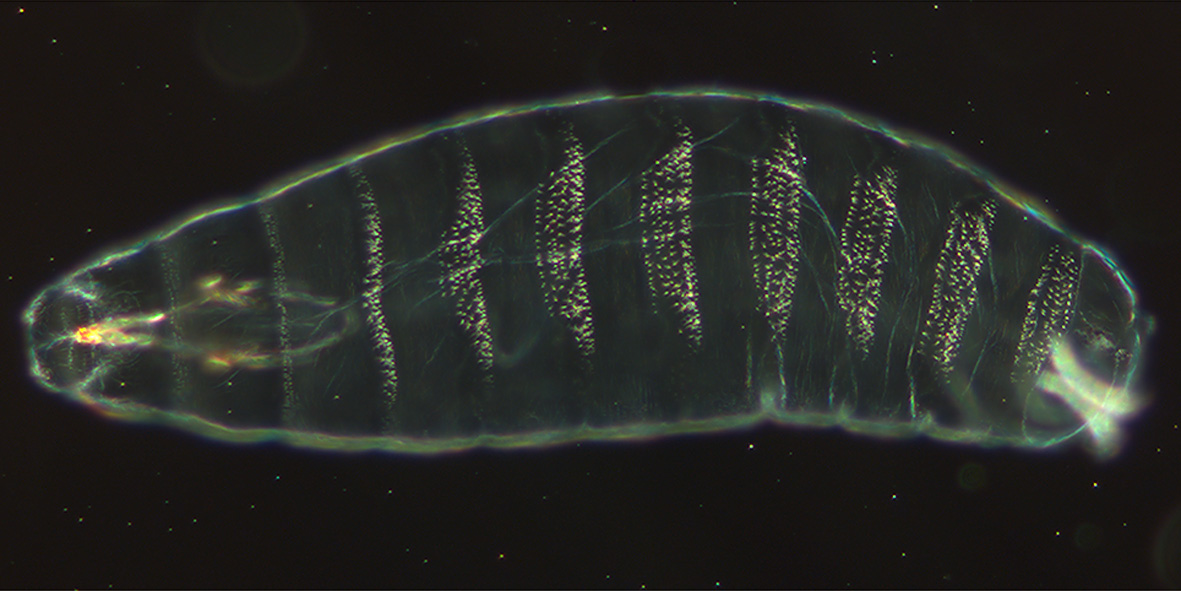|
Compartment (development)
Compartments can be simply defined as separate, different, adjacent cell populations, which upon juxtaposition, create a lineage boundary. This boundary prevents cell movement from cells from different lineages across this barrier, restricting them to their compartment. Subdivisions are established by morphogen gradients and maintained by local cell-cell interactions, providing functional units with domains of different regulatory genes, which give rise to distinct fates. Compartment boundaries are found across species. In the hindbrain of vertebrate embryos, rhobomeres are compartments of common lineage outlined by expression of Hox genes. In invertebrates, the wing imaginal disc of ''Drosophila'' provides an excellent model for the study of compartments. Although other tissues, such as the abdomen, and even other imaginal discs are compartmentalized, much of our understanding of key concepts and molecular mechanisms involved in compartment boundaries has been derived from exp ... [...More Info...] [...Related Items...] OR: [Wikipedia] [Google] [Baidu] |
Cell (biology)
The cell is the basic structural and functional unit of life forms. Every cell consists of a cytoplasm enclosed within a membrane, and contains many biomolecules such as proteins, DNA and RNA, as well as many small molecules of nutrients and metabolites.Cell Movements and the Shaping of the Vertebrate Body in Chapter 21 of Molecular Biology of the Cell '' fourth edition, edited by Bruce Alberts (2002) published by Garland Science. The Alberts text discusses how the "cellular building blocks" move to shape developing s. It is also common ... [...More Info...] [...Related Items...] OR: [Wikipedia] [Google] [Baidu] |
Pattern Formation
The science of pattern formation deals with the visible, (statistically) orderly outcomes of self-organization and the common principles behind similar patterns in nature. In developmental biology, pattern formation refers to the generation of complex organizations of cell fates in space and time. The role of genes in pattern formation is an aspect of morphogenesis, the creation of diverse anatomies from similar genes, now being explored in the science of evolutionary developmental biology or evo-devo. The mechanisms involved are well seen in the anterior-posterior patterning of embryos from the model organism ''Drosophila melanogaster'' (a fruit fly), one of the first organisms to have its morphogenesis studied, and in the eyespots of butterflies, whose development is a variant of the standard (fruit fly) mechanism. Patterns in nature Examples of pattern formation can be found in biology, physics, and science, and can readily be simulated with computer graphics, as desc ... [...More Info...] [...Related Items...] OR: [Wikipedia] [Google] [Baidu] |
Ectopic Expression
Ectopic is a word used with a prefix, ecto, meaning “out of place.” Ectopic expression is an abnormal gene expression in a cell type, tissue type, or developmental stage in which the gene is not usually expressed. The term ectopic expression is predominantly used in studies using metazoans, especially in ''Drosophila melanogaster'' for research purposes. How is it used Although ectopic expression can be caused by a natural condition, it is uncommonly seen in nature because it is a product of defects in gene regulation. In fact, ectopic expression is more commonly used for research purposes. Artificially induced gene expression helps to determine the function of a gene of interest. Common techniques such as overexpressing or misexpressing the genes by ''UA' system in ''D. melanogaster'' are used. In model organisms, such techniques are used to perform genetic screens to identify a function of the gene involved in specific cellular or developmental processes. Ectopic expression ... [...More Info...] [...Related Items...] OR: [Wikipedia] [Google] [Baidu] |
Anatomical Terms Of Location
Standard anatomical terms of location are used to unambiguously describe the anatomy of animals, including humans. The terms, typically derived from Latin or Greek roots, describe something in its standard anatomical position. This position provides a definition of what is at the front ("anterior"), behind ("posterior") and so on. As part of defining and describing terms, the body is described through the use of anatomical planes and anatomical axes. The meaning of terms that are used can change depending on whether an organism is bipedal or quadrupedal. Additionally, for some animals such as invertebrates, some terms may not have any meaning at all; for example, an animal that is radially symmetrical will have no anterior surface, but can still have a description that a part is close to the middle ("proximal") or further from the middle ("distal"). International organisations have determined vocabularies that are often used as standard vocabularies for subdisciplines o ... [...More Info...] [...Related Items...] OR: [Wikipedia] [Google] [Baidu] |
Engrailed (gene)
''engrailed'' is a homeodomain transcription factor involved in many aspects of multicellular development. First known for its role in arthropod embryological development, working in consort with the Hox genes, ''engrailed'' has been found to be important in other areas of development. It has been identified in many bilaterians, including the arthropods, vertebrates, echinoderms, molluscs, nematodes, brachiopods, and polychaetes. It acts as a "selector" gene, conferring a specific identity to defined areas of the body, and co-ordinating the expression of downstream genes. Protein ''engrailed (en)'' encodes the homeodomain-containing transcription factor protein Engrailed. Homologous Engrailed proteins are found in a diversity of organisms. When expressed in the ectoderm, ''engrailed'' is involved in the production of skeletal material. ''engrailed'', or genes with very similar sequences, are found in all bilaterian animals. ''engrailed'' plays a number of crucial roles in ... [...More Info...] [...Related Items...] OR: [Wikipedia] [Google] [Baidu] |
Blastoderm
A blastoderm ( germinal disc, blastodisc) is a single layer of embryonic epithelial tissue that makes up the blastula. It encloses the fluid filled blastocoel. Gastrulation follows blastoderm formation, where the tips of the blastoderm begins the formation of the ectoderm, mesoderm, and endoderm. Formation The blastoderm is formed when the oocyte plasma membrane begins cleaving by invagination, creating multiple cells that arrange themselves into an outer sleeve to the blastocoel. In oviparous In chicken eggs, the blastoderm represents a flat disc after embryonic fertilization. At the edge of the blastoderm is the site of active migration by most cells.{{cite book, last1=Bellairs, first1=Ruth, last2=Osmond, first2=Mark, title=Atlas of Chick Development, publisher=Atlas Press, page=15–28, edition=3 See also *Blastodisc *Embryology * Cleavage *Gastrulation Gastrulation is the stage in the early embryonic development of most animals, during which the blastula (a single-layere ... [...More Info...] [...Related Items...] OR: [Wikipedia] [Google] [Baidu] |
Drosophila Embryogenesis
''Drosophila'' embryogenesis, the process by which '' Drosophila'' (fruit fly) embryos form, is a favorite model system for genetics and developmental biology. The study of its embryogenesis unlocked the century-long puzzle of how development was controlled, creating the field of evolutionary developmental biology. The small size, short generation time, and large brood size make it ideal for genetic studies. Transparent embryos facilitate developmental studies. ''Drosophila melanogaster'' was introduced into the field of genetic experiments by Thomas Hunt Morgan in 1909. Life cycle ''Drosophila'' display a holometabolous method of development, meaning that they have three distinct stages of their post-embryonic life cycle, each with a radically different body plan: larva, pupa and finally, adult. The machinery necessary for the function and smooth transition between these three phases develops during embryogenesis. During embryogenesis, the larval stage fly will develop and ... [...More Info...] [...Related Items...] OR: [Wikipedia] [Google] [Baidu] |
Clone (cell Biology)
A clone is a group of ''identical'' cells that share a ''common ancestry'', meaning they are derived from the same cell. Clonality implies the state of a cell or a substance being derived from one source or the other. Thus there are terms like ''polyclonal''—derived from many clones; ''oligoclonal''—derived from a few clones; and ''monoclonal''—derived from one clone. These terms are most commonly used in context of antibodies or immunocytes. Contexts This concept of clone assumes importance as all the cells that form a clone share common ancestry, which has a very significant consequence: shared genotype. # One of the most prominent usage is in describing a clone of B cells. The B cells in the body have two important phenotypes (functional forms)—the antibody secreting, terminally differentiated (that is, they cannot divide further) plasma cells, and the memory and the naive cells—both of which retain their proliferative potential. # Another important area where one ... [...More Info...] [...Related Items...] OR: [Wikipedia] [Google] [Baidu] |
Signal Transduction
Signal transduction is the process by which a chemical or physical signal is transmitted through a cell as a series of molecular events, most commonly protein phosphorylation catalyzed by protein kinases, which ultimately results in a cellular response. Proteins responsible for detecting stimuli are generally termed receptors, although in some cases the term sensor is used. The changes elicited by ligand binding (or signal sensing) in a receptor give rise to a biochemical cascade, which is a chain of biochemical events known as a signaling pathway. When signaling pathways interact with one another they form networks, which allow cellular responses to be coordinated, often by combinatorial signaling events. At the molecular level, such responses include changes in the transcription or translation of genes, and post-translational and conformational changes in proteins, as well as changes in their location. These molecular events are the basic mechanisms controlling cell gro ... [...More Info...] [...Related Items...] OR: [Wikipedia] [Google] [Baidu] |
Homeotic Selector Gene
Homeotic selector genes confer segment identity in ''Drosophila''. They encode homeodomain proteins which interact with Hox and other homeotic genes to initiate segment-specific gene regulation. Homeodomain proteins are transcription factors that share a DNA-binding domain called the homeodomain. Changes in the expression and function of homeotic genes are responsible for the changes in the morphology of the limbs of arthropods as well as in the axial skeletons of vertebrates. Mutations in homeotic selector genes do not lead to elimination of a segment or pattern, but instead cause the segment to develop incorrectly. History The homeotic selector genes were discovered through the genetic analysis of Drosophila over 80 years ago . Unusual disturbances were found in the organization of the adult fly, resulting in misplaced limbs, such as legs developing where antennae usually develop or an extra pair of wings developing where halteres should be. This discovery provided a glimpse to u ... [...More Info...] [...Related Items...] OR: [Wikipedia] [Google] [Baidu] |
Heredity
Heredity, also called inheritance or biological inheritance, is the passing on of traits from parents to their offspring; either through asexual reproduction or sexual reproduction, the offspring cells or organisms acquire the genetic information of their parents. Through heredity, variations between individuals can accumulate and cause species to evolve by natural selection. The study of heredity in biology is genetics. Overview In humans, eye color is an example of an inherited characteristic: an individual might inherit the "brown-eye trait" from one of the parents. Inherited traits are controlled by genes and the complete set of genes within an organism's genome is called its genotype. The complete set of observable traits of the structure and behavior of an organism is called its phenotype. These traits arise from the interaction of its genotype with the environment. As a result, many aspects of an organism's phenotype are not inherited. For example, suntanned sk ... [...More Info...] [...Related Items...] OR: [Wikipedia] [Google] [Baidu] |
Regeneration (biology)
In biology, regeneration is the process of renewal, restoration, and tissue growth that makes genomes, cells, organisms, and ecosystems resilient to natural fluctuations or events that cause disturbance or damage. Every species is capable of regeneration, from bacteria to humans. Regeneration can either be complete where the new tissue is the same as the lost tissue, or incomplete where after the necrotic tissue comes fibrosis. At its most elementary level, regeneration is mediated by the molecular processes of gene regulation and involves the cellular processes of cell proliferation, morphogenesis and cell differentiation. Regeneration in biology, however, mainly refers to the morphogenic processes that characterize the phenotypic plasticity of traits allowing multi-cellular organisms to repair and maintain the integrity of their physiological and morphological states. Above the genetic level, regeneration is fundamentally regulated by asexual cellular processes. Regenera ... [...More Info...] [...Related Items...] OR: [Wikipedia] [Google] [Baidu] |

_en_rotate_05.jpg)

.jpg)

